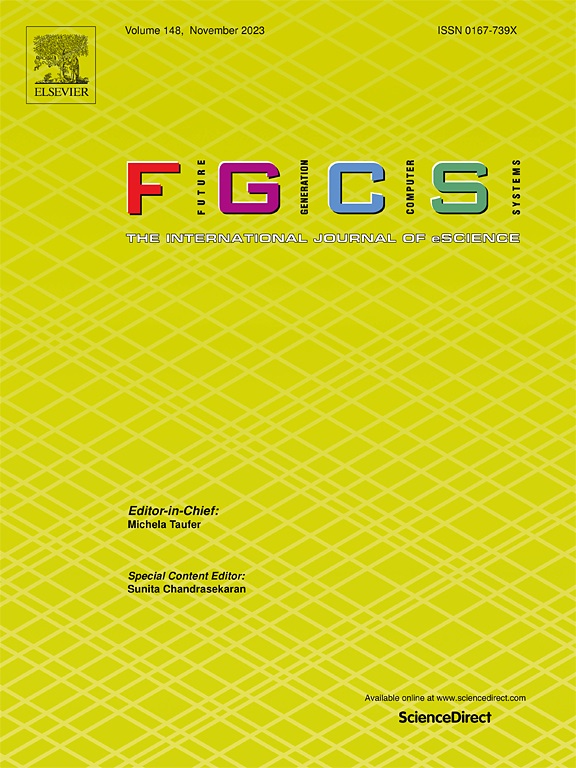Towards sustainable smart cities: Workflow scheduling in cloud of health things (CoHT) using deep reinforcement learning and moth flame optimization for edge–cloud systems
IF 6.2
2区 计算机科学
Q1 COMPUTER SCIENCE, THEORY & METHODS
Future Generation Computer Systems-The International Journal of Escience
Pub Date : 2025-03-26
DOI:10.1016/j.future.2025.107821
引用次数: 0
Abstract
In smart cities, the Cloud of Health Things (CoHT) enhances service delivery and optimizes task scheduling and allocation. As CoHT systems proliferate and offer a range of services with varying Quality of Service (QoS) demands, servers face the challenge of efficiently distributing limited virtual machines across internet-based applications. This can strain performance, particularly for latency-sensitive healthcare applications, resulting in increased delays. Edge computing mitigates this issue by bringing computational, storage, and network resources closer to the data source, working in tandem with cloud computing. Combining edge and cloud computing is essential for improving efficiency, especially for IoT-driven tasks where reliability and low latency are vital concerns. This paper introduces an intelligent task scheduling and allocation model that leverages the Moth Flame Optimization (MFO) algorithm, integrated with deep reinforcement learning (DRL), to optimize edge–cloud computing in sustainable smart cities. The model utilizes a bi-class neural network to classify tasks, ensuring rapid convergence while delivering both local and globally optimal solutions, achieving efficient resource allocation, and enhancing QoS. The model was trained on real-world and synthesized cluster datasets, including the Google cluster dataset, to learn cloud-based job scheduling, which is then applied in real-time. Compared with DRL and non-DRL approaches, the model shows significant performance gains, with a 76.2% reduction in latency, an 81.9% increase in reliability, a 74.4% improvement in resource utilization, and an 83.1% enhancement in QoS.
求助全文
约1分钟内获得全文
求助全文
来源期刊
CiteScore
19.90
自引率
2.70%
发文量
376
审稿时长
10.6 months
期刊介绍:
Computing infrastructures and systems are constantly evolving, resulting in increasingly complex and collaborative scientific applications. To cope with these advancements, there is a growing need for collaborative tools that can effectively map, control, and execute these applications.
Furthermore, with the explosion of Big Data, there is a requirement for innovative methods and infrastructures to collect, analyze, and derive meaningful insights from the vast amount of data generated. This necessitates the integration of computational and storage capabilities, databases, sensors, and human collaboration.
Future Generation Computer Systems aims to pioneer advancements in distributed systems, collaborative environments, high-performance computing, and Big Data analytics. It strives to stay at the forefront of developments in grids, clouds, and the Internet of Things (IoT) to effectively address the challenges posed by these wide-area, fully distributed sensing and computing systems.

 求助内容:
求助内容: 应助结果提醒方式:
应助结果提醒方式:


